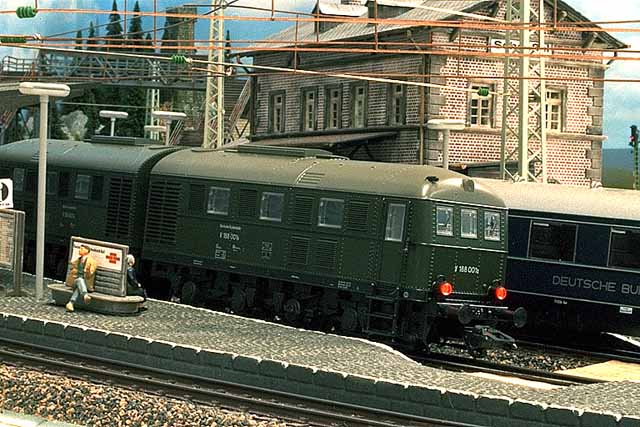V 188 001 (37282)
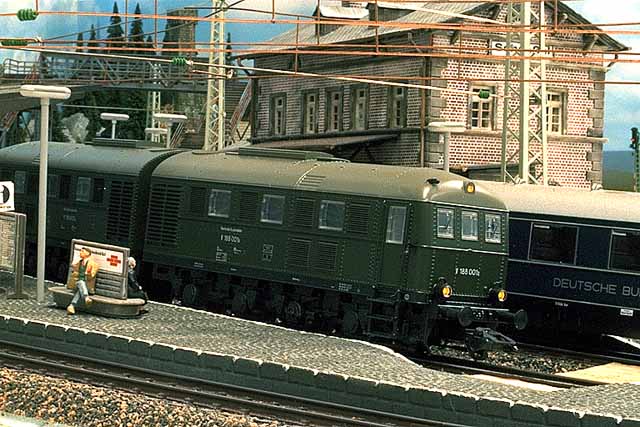

The V188 is an exotic loco. It was built for the German military, but after WW II they worked well in freight transportation. The Märklin model has a solid, detailed metal body. The varnish and the lettering are very good. The windows on the sides have some "noses" which look less pretty and the distance between the two locomotive units is too large.
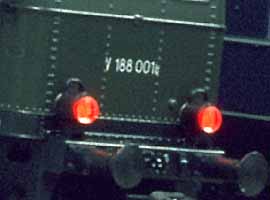
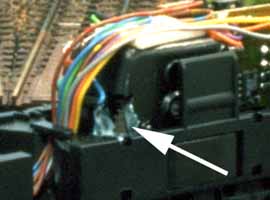
The first test drive was a disappointment. The engine of the B-unit makes a horrible noise at speed level 7. The motor was subject to continual load level changes and one of the gears acknowledged this with rhythmical howling. At lower speed it seems that the engine of the A-unit turns higher, so that it pushes the second engine. However, at speeds above level 7 the B-engine turns higher, so that now the A-engine gets pushed. At speed level 7 is the noise intolerable. I removed the body of the B-unit and took a look at the noisemaker. The culprit is the large gear that wanders from side to side under changing load conditions. On one side it touches the engine block and on the other side the adjacent gear (white arrow). I lubricated the sides of the large gear (not the teeth) with generous quantities of Teflon grease from Robbe. After this the noise is nearly gone.
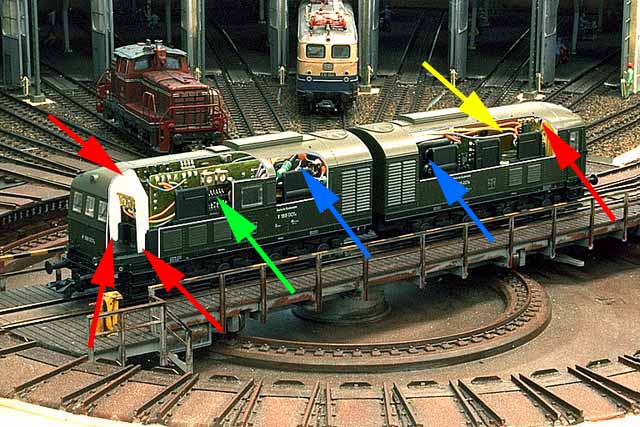
Newer Märklin locomotives have two-color LED's instead of light bulbs. The V188 has tiny SMD-LED's (red arrows). The yellow lights look all right with this old-timer locomotive, but with new locomotives like the BR 101 they are inappropriate.
The decoder, a special version of the 60901 (602664), is in the A-Unit (green arrow). To supply enough power to drive two engines, the decoder has additional transistors. The control is handled by averaging the sum-EMK of both motors and, naturally, this can not be as precise as if it was done for one motor alone. Although in practice it works well. At speed level 1 the loco drives at a speed so low, as I have never seen before. The engine turns smoothly, but it is so slow, you can count the turns of the rotor. See also the test drive of other 60901 locomotives on page 5: BR 221 + 60902.
The 37282 has the new 60901 with three functions:
f1: Dieselsound
f3: Horn
f4: Turn off the preset delay
The well known DCM's are in the in the rear part of the respective locomotive units (blue arrows).
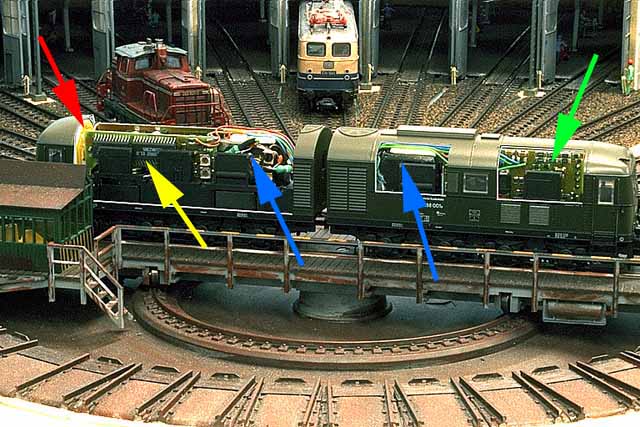
The sound module is the equal of the V200 (37803), but it has another spare part number (602755) (yellow arrow) and it is in the B-unit. With two potentiometers you can adjust the sound level of the diesel and the horn. The speaker is under the sound module in an opening of the chassis.
The sound module has four dip-switches:
1: Advance lubrication - short/long
2: Start at a signal - starting/starter
3: Engine noise - 1 motor/2 motors
4: Load-free running - shutoff after 10 sec./continuous running
The V188 is a diesel-electric locomotive and it sounds different compared to the diesel-hydraulic loco V200. I use the short advance lubrication as opposed to the V200. Switch 3 is set to 2 motors. This has the effect that the virtual Diesel does not howl like a diesel-hydraulic engine, but rather changes the RPM's slightly during start up. This sounds more like a diesel-electric motor. The other switches are set to starting and continuous running like my V200.
